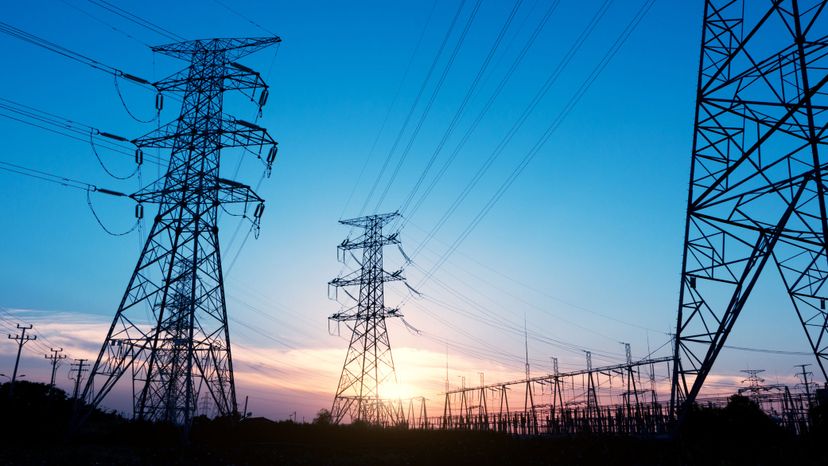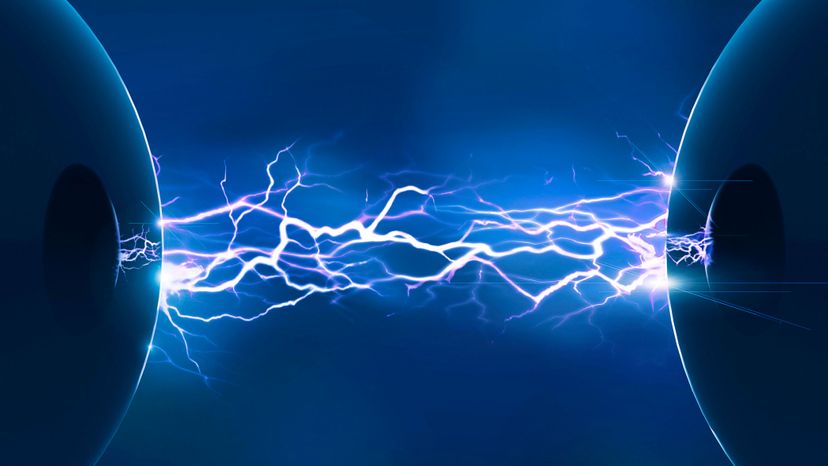
So much of our daily lives runs on electricity, yet most of us don't know the difference between a 60-watt and 75-watt light bulb. Let's explore more about the watt.
Advertisement

So much of our daily lives runs on electricity, yet most of us don't know the difference between a 60-watt and 75-watt light bulb. Let's explore more about the watt.
Advertisement
Of all the different units of electricity, wattage is probably the most familiar. For years, you've been buying 40-watt light bulbs and 60-watt light bulbs with the general understanding that a 60-watt bulb is going to be brighter than a 40-watt bulb. But why?
Wattage, it turns out, is the amount of power an electric device consumes. Another way to think about wattage is "electricity at work" — the power it takes to actually do something, whether it's running a vacuum (400 to 900 watts), ringing the doorbell (2 to 4 watts) or illuminating a light bulb (40 to 75 watts).
Advertisement
To calculate wattage, you simply multiply voltage (pressure/speed) by amperage (volume), expressed as V x A = W. The faster each electron moves through the circuit, and the greater the volume that the circuit can hold, the higher the wattage. Wattage is measured in units called watts and named after James Watt, the Scottish engineer who popularized the steam engine.
The watt became a unit of power in the International System of Units (SI), a standardized measurement system, in 1960 during the 11th General Conference on Weights and Measures. However, its roots go back to the 19th century, first introduced as a unit of power by the British Association for the Advancement of Science in 1882. Today, the watt is universally used to measure power in fields ranging from electricity to mechanical systems.
Advertisement
A watt multiple is a unit derived from the watt to express larger or smaller quantities of power. These multiples make it easier to quantify power levels across different scales of use. Common watt multiples include:
Advertisement
A watt-hour (Wh) is a unit of energy that measures the amount of work done or energy consumed when a device uses one watt of power for one hour. It helps quantify total energy consumption over time, as opposed to instantaneous power, which is measured in watts. For example, if a 60-watt light bulb operates for 2 hours, it consumes 120 watt-hours. Watt-hours are common in electricity billing and to describe the capacity of batteries and energy storage systems.
Advertisement
The three most basic units in electricity are voltage (V), current (I, uppercase "i") and resistance (R). We measure voltage in volts, current in amps and resistance in ohms.
Voltage is a measurement of the electric potential or "pressure" at which electricity flows through a system. Voltage is also described as the speed of individual electrons as they move through a circuit and is measured in units called volts.
Advertisement
In the United States, power from the electrical grid is delivered to homes at two different voltages or "pressures": 120 volts and 240 volts. That's because different home appliances operate at different voltages. Large, energy-hungry appliances like air conditioning units, electric ranges and clothes dryers operate at 240 volts, while most other devices like light bulbs, TVs, computers and cell phone chargers only need 120 volts.
Volts are named after the Italian physicist Alessandro Volta, who built one of the first batteries in 1800.
Amperage is another way to measure the amount of electricity running through a circuit. Amperage is the "rate" that current is flowing through the circuit or the number of electrons moving through the wire. Amperage is listed in units called amps (or amperes). The unit is named after French physicist André-Marie Ampère, one of the fathers of electromagnetism.
You might come across amps if you look inside your home's service panel (also called the breaker box). You'll see different circuit breakers listed as 15 amps, 20 amps and 30 amps. The larger the amperage, the more electricity can flow through the circuit. Again, large appliances like air conditioners, washers and dryers will be connected to 30-amp circuits, while most outlets in a home will be powered by 20-amp or 15-amp circuits.
If you try to run too many appliances on the same circuit, the breaker will "trip" and cut off power in order to protect the wiring from overheating.
Ah, you thought we were done. So far, we've talked about different ways to measure the amount of electricity flowing through a circuit, and how much wattage is needed to run different electrical devices connected to that circuit.
But circuits are made up of wires and wires are not perfect conductors. Most home electrical wiring is made of copper or aluminum, and both of those materials have a certain amount of natural resistance or friction, which slows down the flow of electricity. When electricity passes through electrical devices and appliances, they also apply their own resistance.
Resistance is measured in ohms, which are named after the German physicist and mathematician Georg Simon Ohm.
If you're still a little confused about the relationship between volts, amps, watts and ohms, keep reading for a helpful analogy.
Advertisement
A neat analogy to help understand these terms is a system of plumbing pipes. The voltage is equivalent to the water pressure, the current (amperage) is equivalent to the flow rate, and the resistance is like the pipe size.
There is a basic equation in electrical engineering that states how the three terms relate. It says that the current is equal to the voltage divided by the resistance or I = V/R. This is known as Ohm's law (named after our friend Georg Simon Ohm).
Advertisement
Let's see how this relation applies to the plumbing system. Let's say you have a tank of pressurized water connected to a hose that you are using to water the garden.
What happens if you increase the pressure in the tank? You probably can guess that this makes more water come out of the hose. The same is true of an electrical system: Increasing the voltage will make more current flow.
Let's say you increase the diameter of the hose and all of the fittings to the tank. You probably guessed that this also makes more water come out of the hose. This is like decreasing the resistance in an electrical system, which increases the current flow.
Electrical power is measured in watts. In an electrical system power (P) is equal to the voltage multiplied by the current.
The water analogy still applies. Take a hose and point it at a waterwheel like the ones that were used to turn grinding stones in watermills. You can increase the power generated by the waterwheel in two ways. If you increase the pressure of the water coming out of the hose, it hits the waterwheel with a lot more force and the wheel turns faster, generating more power. If you increase the flow rate, the waterwheel turns faster because of the weight of the extra water hitting it.
Advertisement

In an electrical system, increasing either the current or the voltage will result in higher power. Let's say you have a system with a 6-volt light bulb hooked up to a 6-volt battery. The power output of the light bulb is 100 watts. Using the equation I = P/V, we can calculate how much current in amps would be required to get 100 watts out of this 6-volt bulb.
You know that P = 100 W, and V = 6 V. So, you can rearrange the equation to solve for I and substitute in the numbers.
Advertisement
I = 100 W/6 V = 16.67 amps
What would happen if you use a 12-volt battery and a 12-volt light bulb to get 100 watts of power?
I = 100 W/12 V = 8.33 amps
So, this latter system produces the same power, but with half the current. There is an advantage that comes from using less current to make the same amount of power. The resistance in electrical wires consumes power, and the power consumed increases as the current going through the wires increases. You can see how this happens by doing a little rearranging of the two equations. What you need is an equation for power in terms of resistance and current. Let's rearrange the first equation:
I = V/R can be restated as V = I*R
Now you can substitute the equation for V into the other equation:
P = V*I substituting for V we get P = I*R*I, or P = I2*R
What this equation tells you is that the power consumed by the wires increases if the resistance of the wires increases (for instance, if the wires get smaller or are made of a less conductive material). But it increases dramatically if the current going through the wires increases. So, using a higher voltage to reduce the current can make electrical systems more efficient. The efficiency of electric motors also improves at higher voltages.
This improvement in efficiency is what drove the automobile industry to consider switching from 12-volt electrical systems to 42-volt systems in the 1990s. As more cars shipped with electric-powered amenities — video displays, seat heaters, "smart" climate control — they required thick bundles of wiring to supply enough current. Switching to a higher-voltage system would provide more power with thinner-gauge wiring.
The switch never happened, because carmakers were able to boost efficiencies with digital technology and more efficient electric pumps at 12 volts. But newer hybrid and fully electric (EV) cars and trucks have electrical systems that average 450 to 650 volts to run powerful electric motors.
Advertisement
Please copy/paste the following text to properly cite this HowStuffWorks.com article:
Advertisement